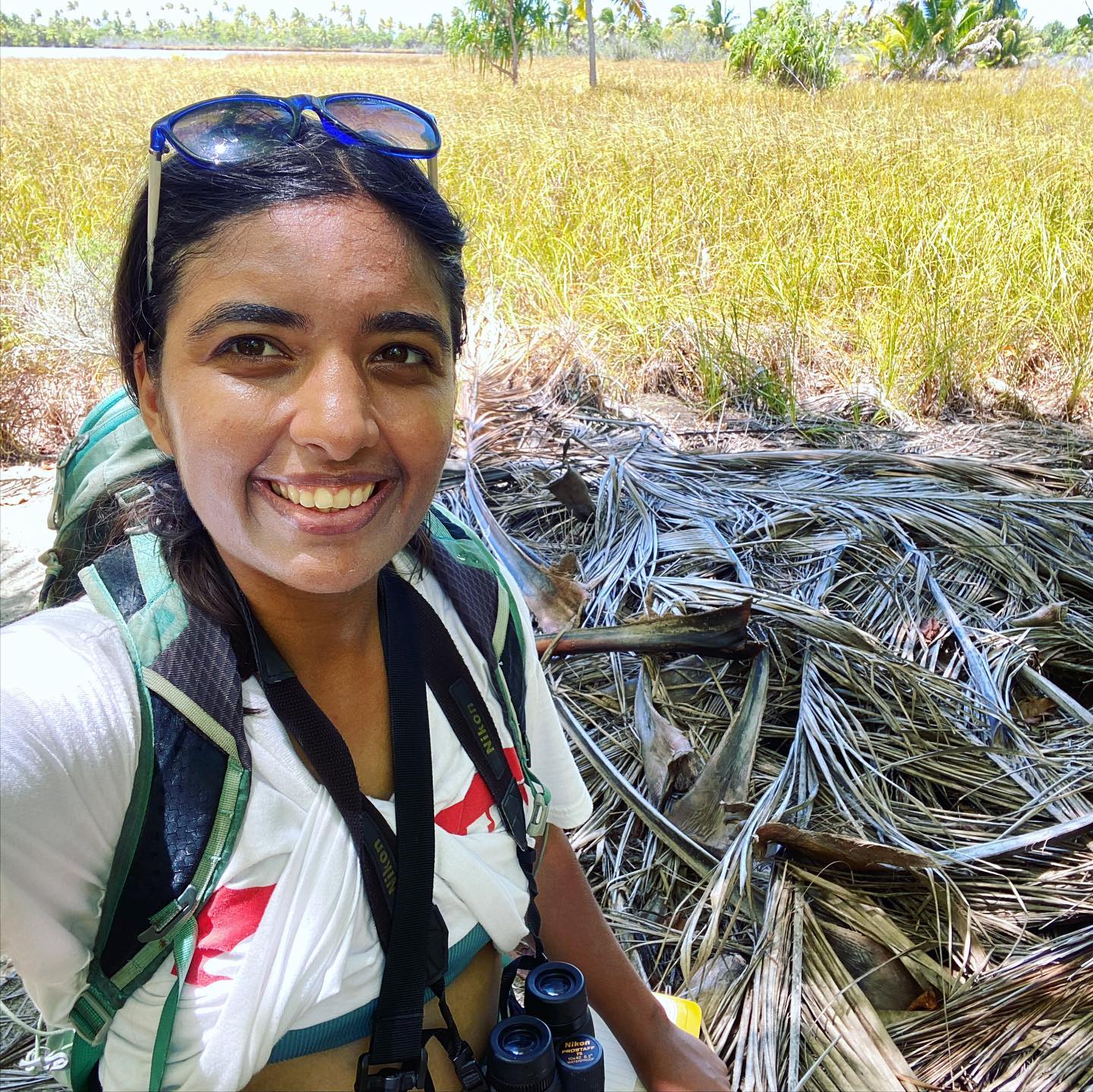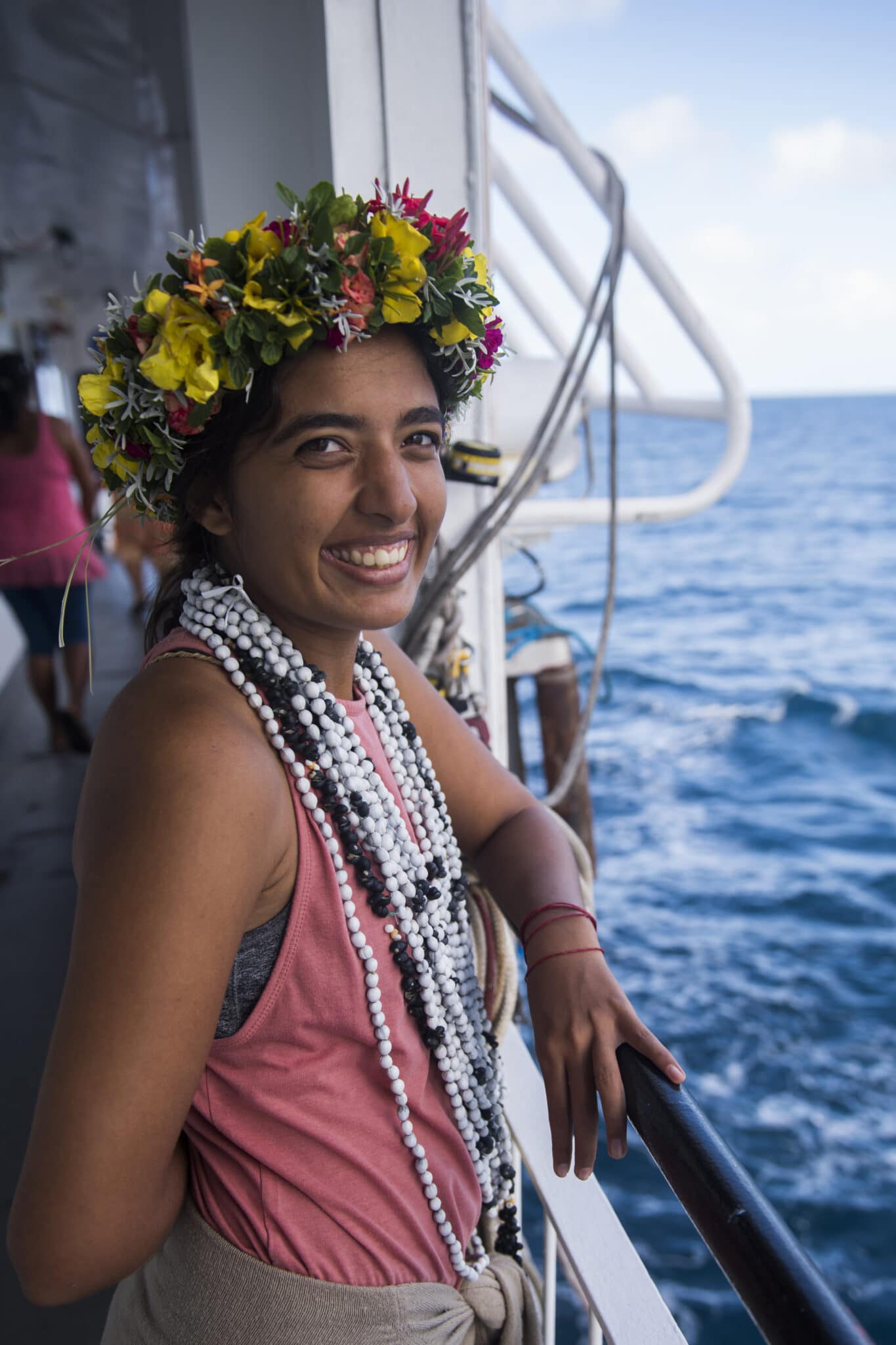Conservation Careers: Restoring Islands for Birds in French Polynesia
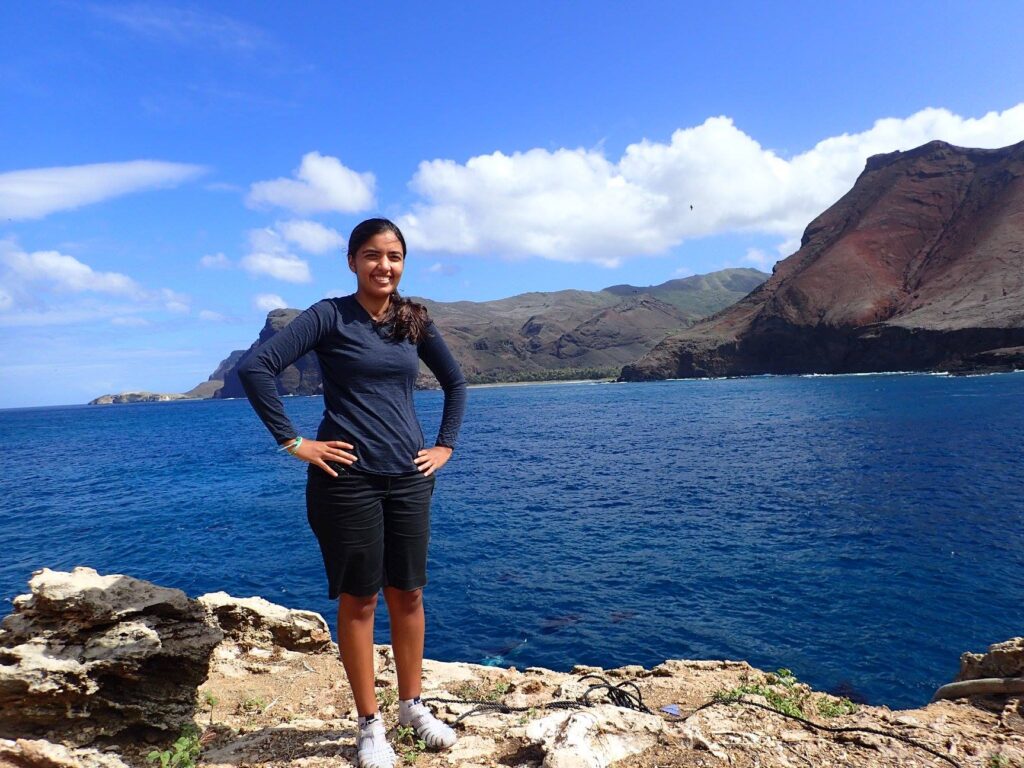
Tehani Withers began her career as an intern at SOP Manu (BirdLife Partner in French Polynesia) through the Conservation Leadership Programme and worked her way up to become their Island Restoration Manager. For Tehani, there is no typical day in the office as tasks can range from camping out in the field surveying birds and plants, to engaging with local communities about conservation, or working on reports and data analysis.
Why did you choose to work in conservation and how did your career start?
Growing up in Tahiti, I enjoyed being out in nature. I would go fishing with my dad, visit rivers, and watch and identify birds and plants. I’m part Kiwi and went on holiday to New Zealand a lot and saw the conservation work they were doing, such as working on protected areas and it made me want to bring this over to Tahiti.
I was studying Restoration Ecology in New Zealand, and I had to do a 9-month internship. SOP Manu were looking for someone young to work with them as part of the Conservation Leadership Programme who would go to Tahuata (Marquesas Archipelago) to survey the Marquesan Kingfisher ‘Pahi’ numbers. I’d never been there so it was a very exciting opportunity! It involved a lot of training and field work like counting birds and using GPS, and afterwards there was some office work such as how to use mapping software and write reports. It was all very new to me, so it was a great way to learn, and luckily as I worked hard, they asked me to return for my second 6 months internship where I was involved in monitoring the Tahiti monarch (Omama’o), plant restoration and rat control. I then went on to study a Masters to study the Takahe, one of the 3 iconic flightless bird of New Zealand, for the Department of Conservation on Motutapu Island, and after graduating the opportunity of a permanent job with Manu came up.
What does your current role as Island Restoration Manager involve?
I work on projects with the BirdLife Partnership trying to restore uninhabited islands where a lot of seabirds and rare birds are suffering because of invasive species like rats, feral cats, and goats. Each day can be very different. Office work is a big part of my role, but I also do field work which is one of the fun parts of the job! We camp out on the islands where I catch rats, count birds, do plant surveys, and train local guides on how to use GPS and set up traps. Working in remote conditions can be challenging though. Sometimes when we are camping there is no water for showers, and there can be long hours and overnight work to ring nocturnal seabirds. I also engage with the community in schools and at public meetings so they can learn about what we are working on and why.
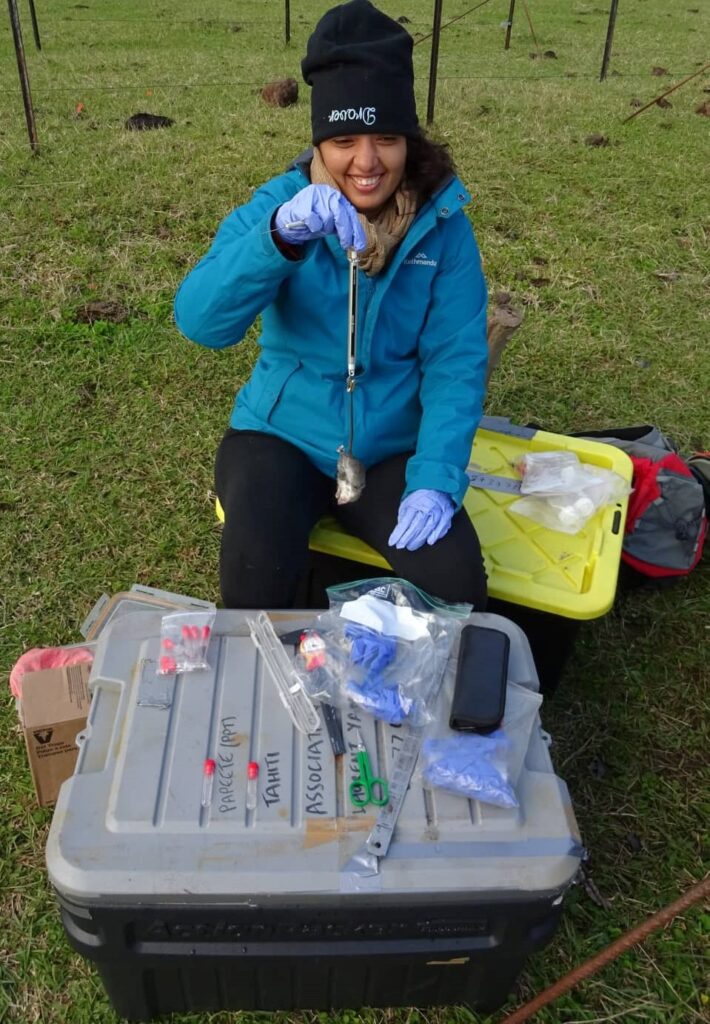
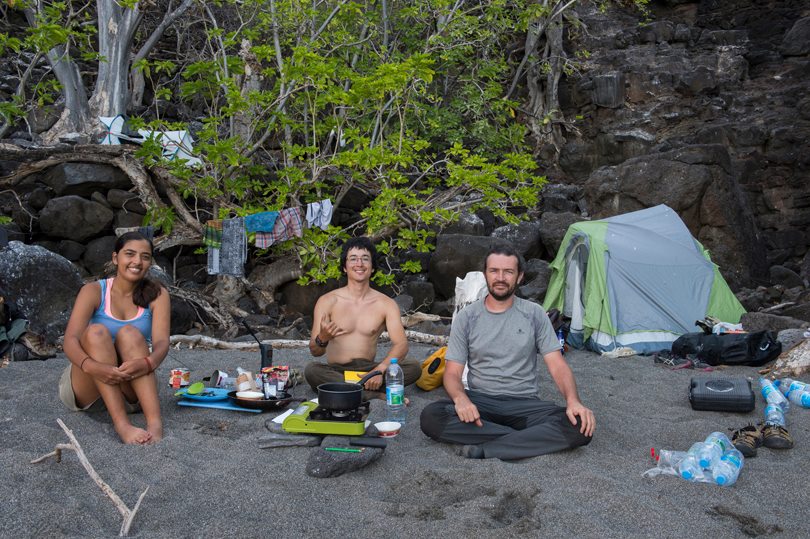
What challenges are you facing locally?
Invasive species such as rats, feral cats, and goats are a big challenge. On the remote sites where I work, seabirds nest in burrows or directly on the ground, and the introduced Pacific rat predates on their chicks and eggs. Some species suffer more than others, such as storm petrels as they are very small birds so even the adults are eaten by rats. The Rapa shearwater (local name Kakikaki) has has gone from 1,000 pairs to less than 200 and will disappear eventually if rats are not eradicated. Introduced feral cats also predate on birds and eggs, and other animals such as lizards, crabs, and insects. Feral goats don’t predate but they destroy habitats and vegetation, for example, shearwaters need soil to burrow but if the goats eat all the grass, the soil erodes and becomes more fragile, so the birds can’t nest properly and burrows collapse easily. On Rapa, we managed to remove goats on three islets where the Rapa shearwater nests, which was a big achievement for us!
Communicating our work and getting support can also be challenging as a lot of people here don’t fully understand why we want to restore uninhabited islands. We need to pitch the idea to people who use these areas for fishing or to collect bird eggs so that they change their behaviour enough to protect the colonies. It can also vary depending on site as different sites have different invasive species. No one is against us removing rats but removing goats can be more of an issue as local stakeholders live on remote islands where there are so few visits from boats for supplies, which means introduced goats are an important resource for meat. Getting the support of locals is not the easiest but makes a huge difference once they are on board.
“The best part of my job is that I am able to see beautiful places and species that not many people get the opportunity to see. I also meet a lot of great people in the field and learn a lot from locals about their culture and language.”
How do you work with local communities to get them involved in conservation?
Conservation is better if you have locals behind you. It can take years to spread ideas through a whole community, and some people have forgotten why birds are so important. I want local people to be involved in our efforts so when I work on the islands, I always try to hire local guides to work with us and they often share what we are working on with the rest of the community.
I also go into schools to teach the children and show them pictures of birds and explain why they are important. Once, we worked with the environmental NGO on Rapa (Raumatariki) to arrange for kids to go and see birds and endemic plants of the island and learn about the work that we (SOP Manu & Raumatariki) are working on.
It can be easier to get through to the kids, they are very receptive to ideas and will often go home and teach their parents about why we all need to protect local wildlife. When I hear from parents that their kids are interested, enjoy observing birds and are telling their parents not to eat seabird chicks or eggs, it’s a proud moment for me that our work is having an impact on people.
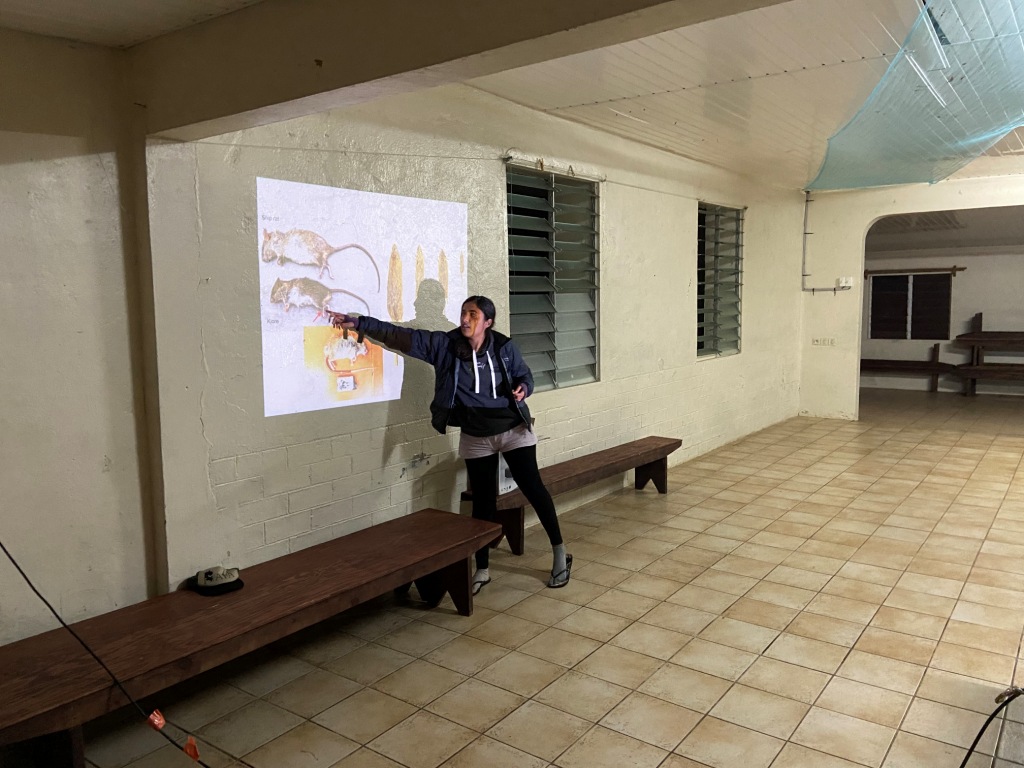
What are the best and most challenging parts of your job?
The best part of my job is that I am able to see beautiful places and species that not many people get the opportunity to see. I also meet a lot of great people in the field and learn a lot from locals about their culture and language. A challenging part is trying to convey why conservation of species is important. But overall, people are receptive and eventually we will get somewhere.
Being a woman in the field can be difficult for safety reasons as I’m alone in the field a lot, though I haven’t had a lot of problems. Society is changing, for example in New Zealand there are a lot more women working in conservation, but in remote communities it is often still a male dominated sector. Sometimes people doubt that I can be a leader, so I need to adapt depending on who I’m working with. I used to feel pressure not to be too feminine, as a way to convey confidence that I am capable of working in the field, but nowadays I just want to be myself and hopefully inspire more local girls and women to get into a conservation career.
Do you have any advice for aspiring conservationists?
It’s not all about grades, experience is the most important part. I studied up to my Masters because I liked school but I also volunteered a lot with different NGOs which helped me get my first role. I would also recommend getting experience working with schools and community groups. Skills like a diving certificate or getting permits to drive certain trucks and boats are also good to have on your CV. Conservation is a very small world so it’s important to make a good impression to open doors to future opportunities.
“I used to feel pressure not to be too feminine, as a way to convey confidence that I am capable of working in the field, but nowadays I just want to be myself and hopefully inspire more local girls and women to get into a conservation career.”
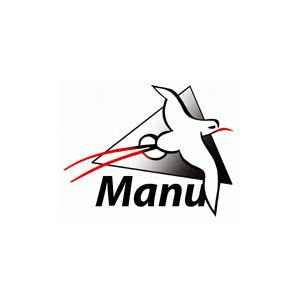
SOP Manu works for the protection of the wild birds of Tahiti and its Islands, as well as for the preservation of their habitats. Find out more about their work here.
Sign up to our jobs newsletter
Our jobs newsletter curates the latest jobs across the BirdLife network straight to your inbox.


